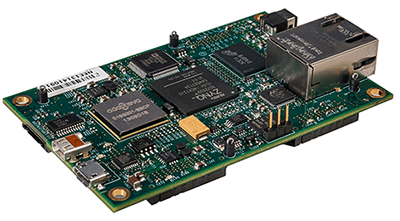You are using an out of date browser. It may not display this or other websites correctly.
You should upgrade or use an alternative browser.
You should upgrade or use an alternative browser.
Interesting Items...
- Thread starter Black Hole
- Start date
Ezra Pound
Well-Known Member
I appreciate prpr's argument about how many Watts you Vacuum cleaner takes and how long it is turned on for, but there does seem to be a trend towards the " my car engine is bigger than your car engine" numbers game going on here. I purchases a Hoover U1104 cleaner in 1987, it consumed 300Watts, in 1996 I bought a Dyson DC01, it consumed 1000Watts, yes, it was betted than the Hoover but it took 3.3 times more power, the current Dysons consume up to 1400Watts, why?. Surely part of better design is better efficiency and I don't think the current Dysons would do the cleaning 4.5 times quicker than the old Hoover
D
Deleted member 473
The old Hoover would not suck up most of the dirt in your carpet a Dyson would, EP, so a comparison is difficult. Also, the Hoover would have shot most of what it extracted right back into the room through its exhaust.
I accept your point, though about the arms race, with Vax selling well over 2kW machines that are worse than their Dyson cousins, despite claiming more air watts.
Apparently a Hepa filter is a huge power drain.
I accept your point, though about the arms race, with Vax selling well over 2kW machines that are worse than their Dyson cousins, despite claiming more air watts.
Apparently a Hepa filter is a huge power drain.
Black Hole
May contain traces of nut
With the current batch of turbo hoovers, you'd be lucky to have any underlay left after a few months! [facetious mode off]
Black Hole
May contain traces of nut
Blitzortung is producing some great results tonight! Actual strikes get a radiating circle, turn on the detector display and all the vectors get flashed up.
http://www.blitzortung.org/Webpages/index.php?lang=en&page_0=12
http://www.blitzortung.org/Webpages/index.php?lang=en&page_0=12
Black Hole
May contain traces of nut
Here's a different version, with zoom-able maps: http://www.lightningmaps.org/realtime?lang=en
D
Deleted member 473
Black Hole
May contain traces of nut
Interesting yes, but hard to see what one might use it for unless doing super-computer type tasks.
D
Deleted member 473
File server?
Media server?
Web server?
It is about credit card size, cheap and extremely fast.
Media server?
Web server?
It is about credit card size, cheap and extremely fast.
Black Hole
May contain traces of nut
I can't see that it would need all those parallel processing cores for the jobs you suggest, or how you would program it to use them. It is only extremely fast when a problem can be broken into small independent parts and each part assigned to an individual core - such as vector and array computations.
MikeSh
Well-Known Member
It is about credit card size, cheap and extremely fast.
That is r-e-a-l-l-y stretching the definition of 'credit card size'. Certainly wouldn't fit in my wallet

MikeSh
Well-Known Member
It's the same size but thicker. You're gonna need a bigger wallet
I realise we are straying into assume vs .. territory, but that is my point. A 2m long piece of wood can be credit card size if you only look at the end dimensions.
A typical definition of 'size' is: [NOUN] The relative extent of something; a thing’s overall dimensions or magnitude; how big something is.
Something up to about 3mm thick could just about get away with being 'credit card size' but that device ain't it

D
Deleted member 473
Its footprint is credit card sized. Satisfied?
Luke
Well-Knwοn Мember
By that definition the Humax STA-1200 Blade soundbar is very much smaller than credit card size if you stand it on end.Its footprint is credit card sized. Satisfied?

D
Deleted member 473
Your point being?
Trev
The Dumb One
Its footprint is credit card sized. Satisfied?
D
Deleted member 473
OK back to the original definition of size. Or rather, two.
(a) Find two points of the object at maximum distance d apart and use these to define an axis A. Look at the object in a direction perpendicular to A and rotate it about A. At some point the width perpendicular to A will achieve a maximum value c. The 2D size is d by c.
(b) consider all the ways the object can lie on a plane surface in stable equilibrium. Project the object onto the plane and fit the tightest rectangle possible round the projection. Choose one of minimal area. This you can do by rotating a tangent rectangle round the projection and using calculus or common sense. Of all possible equilibria, choose that rectangle that has maximum area.
Other definitions are possible, according with what we commonly call credit card sized.
(a) Find two points of the object at maximum distance d apart and use these to define an axis A. Look at the object in a direction perpendicular to A and rotate it about A. At some point the width perpendicular to A will achieve a maximum value c. The 2D size is d by c.
(b) consider all the ways the object can lie on a plane surface in stable equilibrium. Project the object onto the plane and fit the tightest rectangle possible round the projection. Choose one of minimal area. This you can do by rotating a tangent rectangle round the projection and using calculus or common sense. Of all possible equilibria, choose that rectangle that has maximum area.
Other definitions are possible, according with what we commonly call credit card sized.
gomezz
Well-Known Member
For a credit card that would be the diagonal. Which makes it hard to do the rest of it?(a) Find two points of the object at maximum distance d apart and use these to define an axis A

